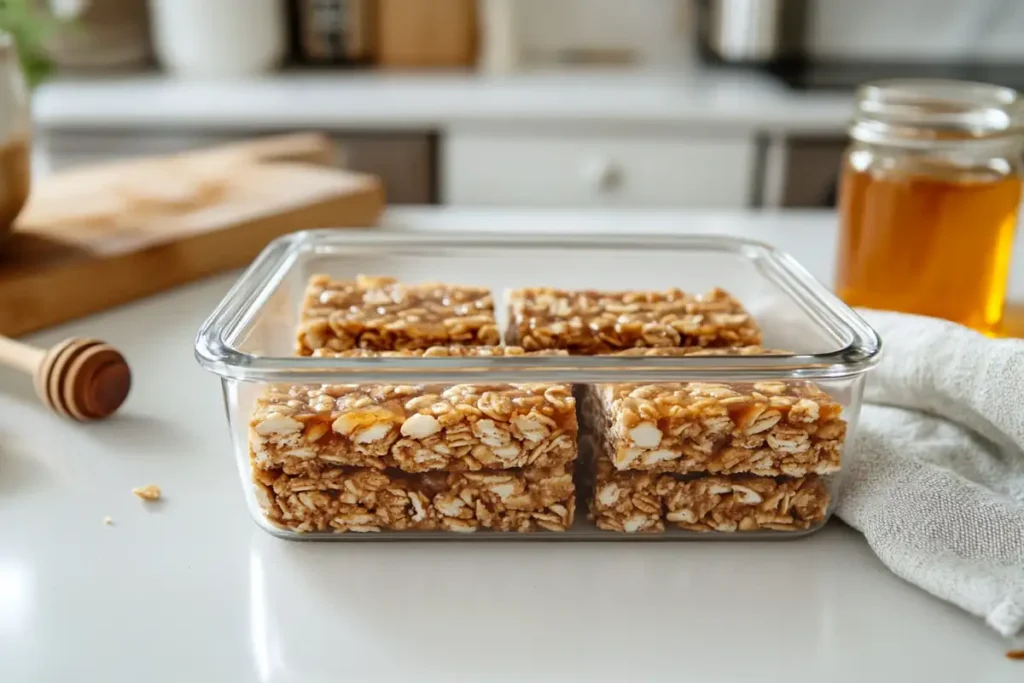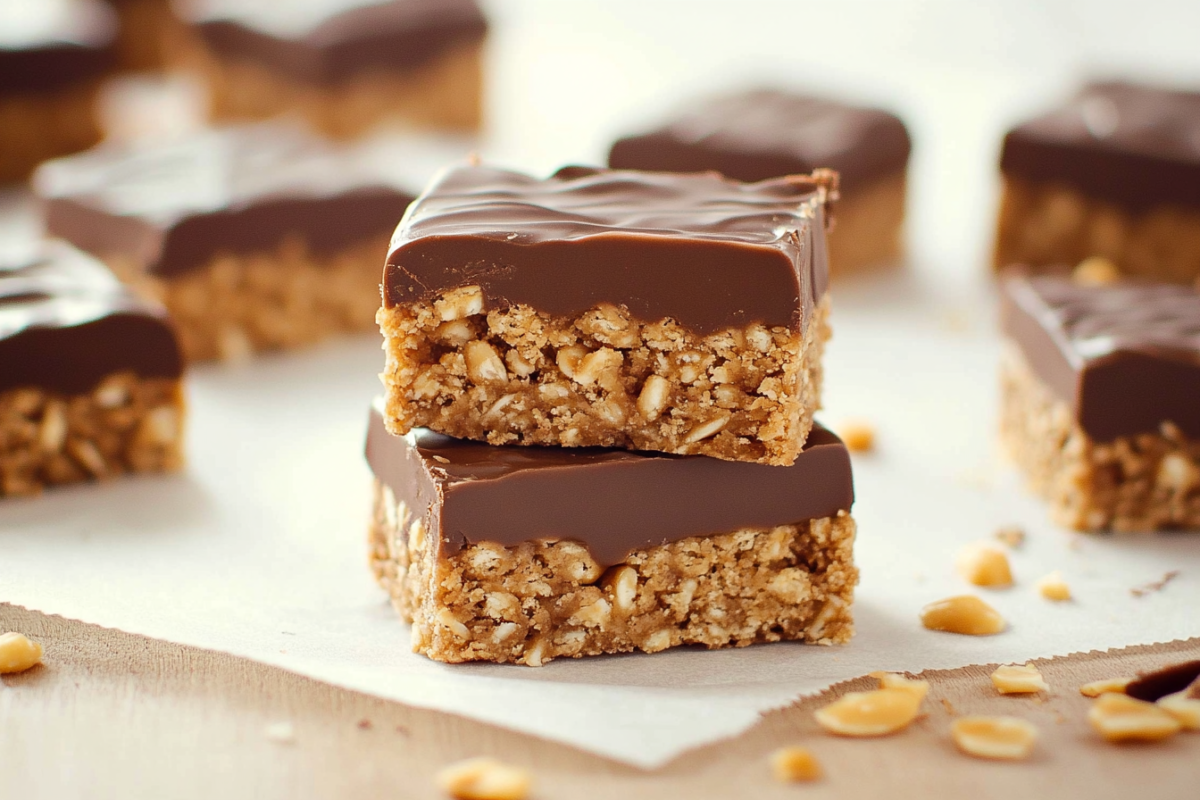They often harden due to dryness and cold storage, but proper wrapping and room temperature storage help keep them soft. Keeping your K Bars soft can feel challenging, especially when the fridge turns them into tough treats. Why are these K Bars hard in the fridge? This detailed guide explores the reasons behind their stiffness, methods to prevent it, and steps to preserve that pleasant bite.
Why Are My Special K Bars Hard in the Fridge? Understanding the Basics of Texture Changes
Storing Special K bars in cold environments often leads to a harder texture. Indeed, when you first ask, “Why are my Special K bars hard in the fridge?” you may assume it is just normal. However, the cause involves how these bars respond to low temperatures and moisture loss. Comparatively, leaving them at room temperature can maintain their softness.
Why do Special K bars get stiff after chilling? Key Factors at Play
Stiff bars often result from sugar and fat hardening when cooled. Generally, these bars contain sweet syrups that firm up in low temperatures. Moreover, the cereal pieces inside lose moisture when chilled, leading to a denser bite. Consequently, bars stored this way become tough.
How temperature affects Special K bars and leads to hardness
When placed in the fridge, bars cool rapidly, causing their sugary binders to firm up. Eventually, this reduces flexibility and makes the texture feel rigid. Furthermore, the cereal components inside lack the softness they need to remain chewy. Altogether, the combination of low temperature and dryness results in a brittle, tooth-cracking snack.
Common Causes That Explain Why Are My Special K Bars Hard in the Fridge?
Another reason involves how you wrap or store them. Indeed, improper packaging can let cold air dry them out. Conversely, proper sealing keeps their moisture intact, preventing the bars from hardening. Comparatively, leaving them out in the open allows a gentle blend of air and humidity to keep them soft, but not always fresh for very long.
Useful wrapping methods to keep your Special K bars from going hard in the fridge

Try placing each bar in an airtight bag before refrigeration. Likewise, add a small piece of parchment paper to reduce moisture loss. Eventually, these small steps prevent dryness inside the fridge. Another simple method involves placing the bars in a sealed container along with a slightly damp paper towel, which helps maintain a softer consistency.
Storing Special K Bars Correctly: Preventing That Firm Bite
Storing your Special K bars properly makes a huge difference. Indeed, the secret lies in balancing temperature and humidity. While the fridge may seem like a safe place, it can quickly turn these bars into near-bricks. Thus, consider storing them at room temperature whenever possible.
Simple fixes to soften Special K bars that are too hard
If your bars have already hardened, try warming them slightly. For example, place one in the microwave on low power for a few seconds. Alternatively, let a bar sit at room temperature until it regains some softness. Eventually, you can enjoy a more pleasant texture. Another idea is to add a thin layer of peanut butter or a gentle chocolate drizzle on top before storing them at moderate conditions.
Practical Solutions to Avoid Wondering “Why Are My Special K Bars Hard in the Fridge?”
Moreover, consider placing your Special K bars in a pantry instead of the fridge. Indeed, a cool cupboard or a sealed container on the counter keeps them from drying out. Generally, they stay softer that way. Particularly, if you live in a warm area, pick a cooler spot away from direct heat. Consequently, your bars remain firm enough to hold their shape but soft enough to bite into easily.
Alternative snacks if you keep asking “Why Are My Special K Bars Hard in the Fridge?”
If you find yourself constantly dealing with tough bars, think about trying other snacks that handle chill better. For example, chewy granola treats often retain their softness in cooler conditions. Comparatively, certain cereal-based treats with slightly different binders stay tender. In the meantime, you can experiment with homemade bars that rely on honey or a softer syrup, which resist hardening as easily.
Alternative Storage Approaches When You Ask “Why Are My Special K Bars Hard in the Fridge?”
If the fridge is your only storage option, try using the crisper drawer. Eventually, that slightly more humid environment may keep them softer. However, ensure the bars stay in airtight containers to avoid absorbing unwanted odors. Another approach involves cutting the bars into smaller pieces and placing them in layers separated by wax paper.
Simple fixes to soften Special K bars that are too hard
If you have bars that ended up rock-like, try a gentle steam approach. Place the bar inside a lightly covered dish near a warm environment for a few minutes. Meanwhile, the trapped moisture will rehydrate the cereal layer. Another trick involves dipping the hardened bar in lukewarm milk or a similar beverage for a short period. However, be careful not to soak them too long, as they may become soggy.
The Role of Fat and Sugar in Special K Bars’ Texture
Fat and sugar bind Special K bars together and influence their feel. While sugar provides sweetness, it also sets into a firmer texture when chilled. Fat can solidify at low temperatures, contributing to the bar’s hard feel. Therefore, understanding the makeup of these bars helps you adjust their storage method. Especially if you are dealing with bars made with chocolate or peanut butter, you must consider their melting and setting points.
If homemade, consider tweaking your bar recipe. For example, reduce the amount of syrup that stiffens easily. Similarly, choose a softer sweetener that maintains a more pliable consistency. Meanwhile, experiment until you find a balance that works best for your taste and storage needs.
Understanding Moisture Levels and Their Effect on Hardness
Moisture keeps foods from becoming dry. When placed in a fridge, Special K bars lose some natural dampness. Consequently, they become hard to chew. Thus, controlling humidity makes a difference. If possible, store them in a slightly more humid environment to preserve their chewiness.
Sometimes, adding a thin layer of a moist spread can help. A gentle swipe of peanut butter or a thin chocolate coating can seal in moisture. Accordingly, you prevent them from turning unpleasantly firm overnight.
Adjusting Homemade Recipes to Avoid the Hardness Problem
If you make your own Special K bars at home, you have control over their texture. Therefore, focus on choosing binders that do not stiffen as much at low temperatures. Consider honey or a syrup known for staying soft. Likewise, use slightly less cereal if the mixture tends to be too dense.
Think about letting your bars set at room temperature instead of placing them directly in the fridge. Particularly if they contain delicate parts, leaving them at moderate warmth helps them retain a chewy feel. Eventually, you will find a method that ensures you never need to ask, “Why are my Special K bars hard in the fridge?” again.
The Impact of Brand Variations on Special K Bars
Not all Special K bars are identical. Some brands or flavor types may harden more than others when cold. If you notice one type sets like stone in the fridge, switch to another flavor that stays softer. Consequently, you can enjoy a more pleasant treat. Meanwhile, store any variety carefully, and remember that a slightly warmer spot may solve most texture issues.
If you stick with the same brand, try buying smaller packages. This allows you to consume them faster before they harden. Eventually, you might learn how long they stay soft at various temperatures. Thus, you can plan your storage times more strategically.
Frequently Asked Questions (FAQs)
Why are my Special K bars hard?
They harden mostly due to cold conditions and moisture loss. When placed in the fridge, the sugars and fats inside the bars firm up, making them feel stiff. If exposed to dry air or not sealed well, they become even harder. Consider storing them in airtight containers at room temperature or gently warming them before eating.
What are Special K bars made of?
They usually contain cereal flakes bound with sweet syrups and often coated with flavors like peanut butter or chocolate. Some versions include dried fruit pieces or nuts. Each brand version may differ slightly, but they commonly rely on cereal and a sugary binder that can stiffen under cooler conditions.
What to use instead of Special K?
If you dislike how Special K bars harden in the fridge, try cereal bars from other brands that remain soft when chilled. You could also consider homemade cereal treats with honey-based binders. Alternatively, pick granola-style bars that hold their tenderness better or bars that rely on softer sweeteners.
What does K bar stand for?
The “K” generally refers to the cereal brand’s name. Special K bars are a known cereal-based snack. The letter serves as a simple brand identifier rather than a direct acronym. They gained popularity for their convenient, snack-friendly format and appealing taste. Although their texture can change in the fridge, thoughtful storage methods prevent them from becoming too firm.
Conclusion
Why are my Special K bars hard in the fridge? Typically, it is due to moisture loss, low temperatures, and stiffening sweeteners. However, storing them at room temperature, sealing them carefully, and choosing softer binders can prevent that tough bite. Eventually, these steps help you enjoy a delicious, chewy snack without worrying about cracking a tooth. Take a moment to consider your storage methods and you will never have to ask this question again.

